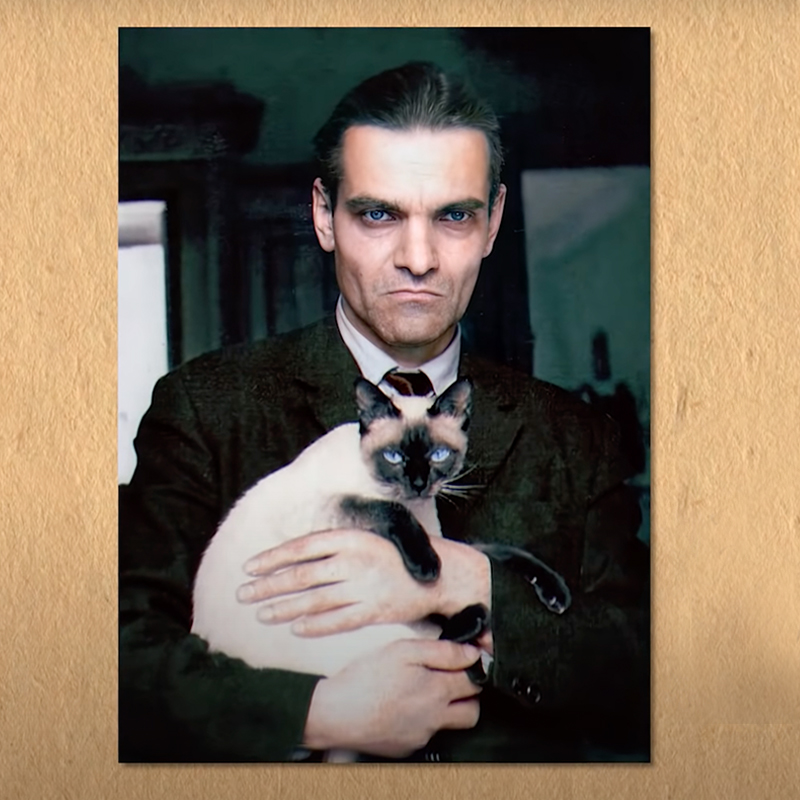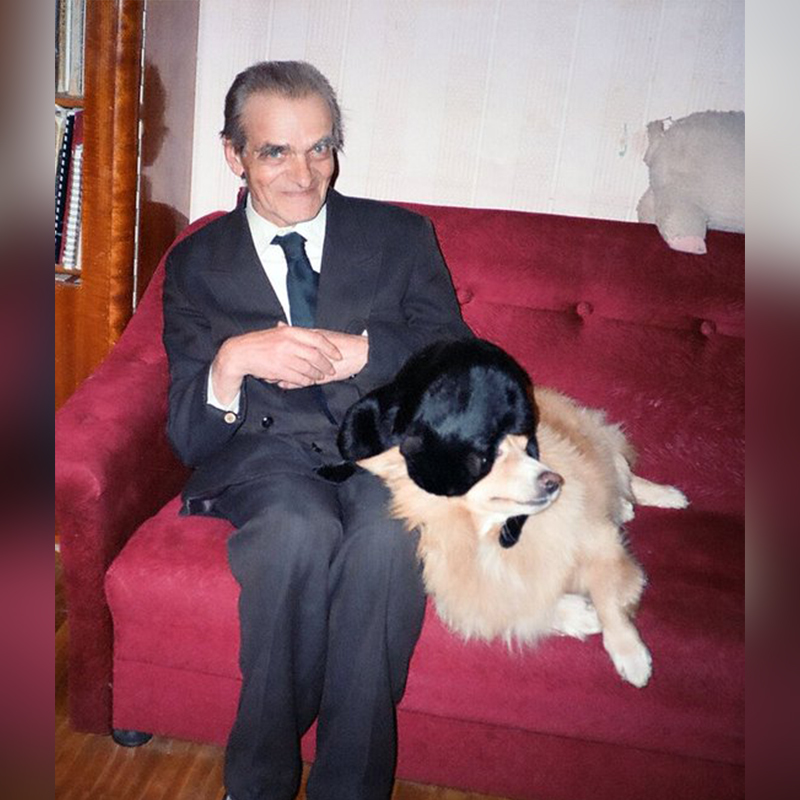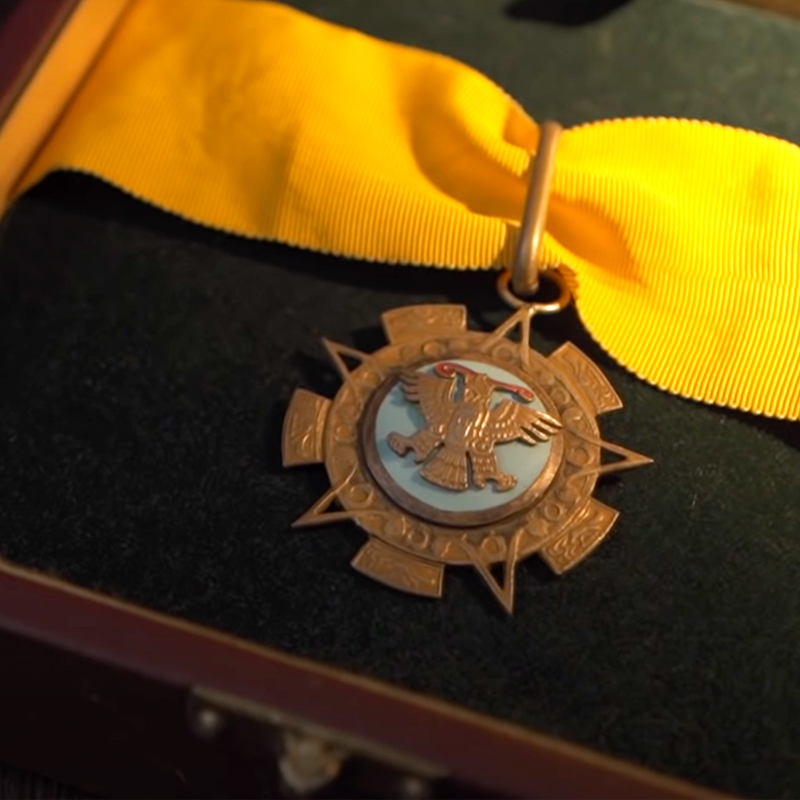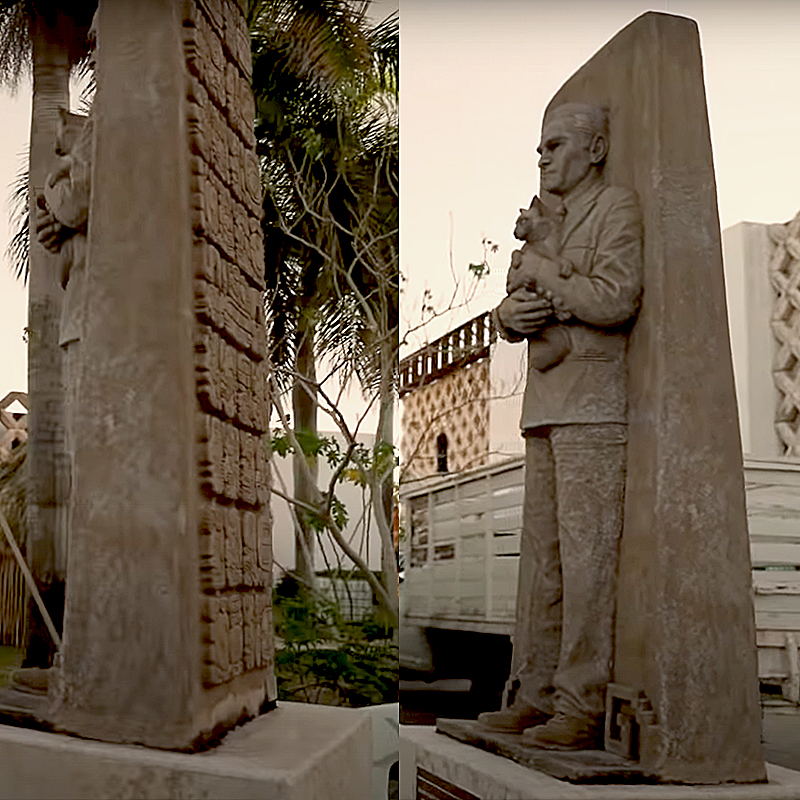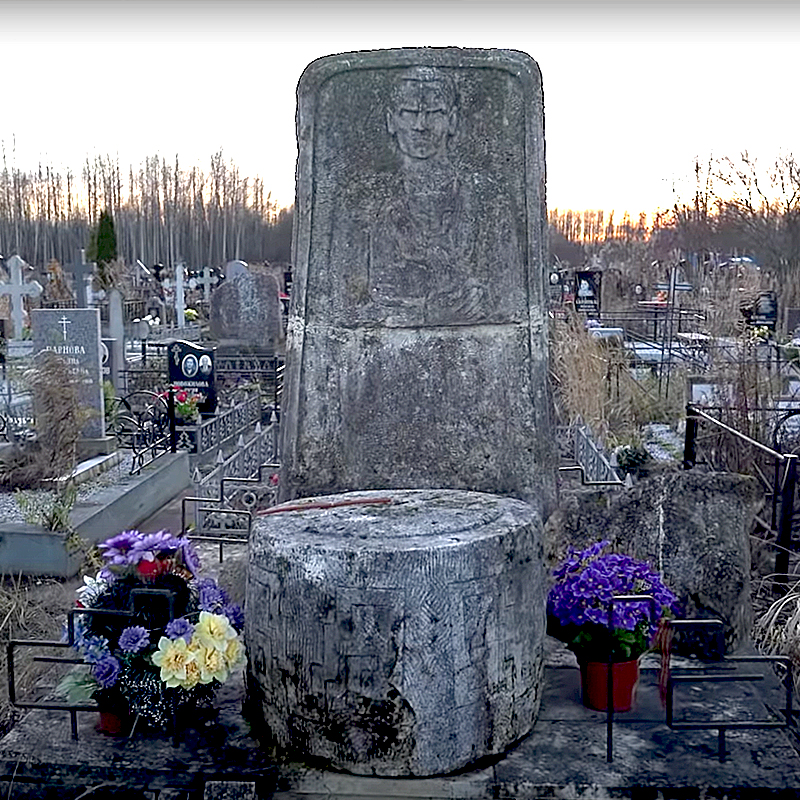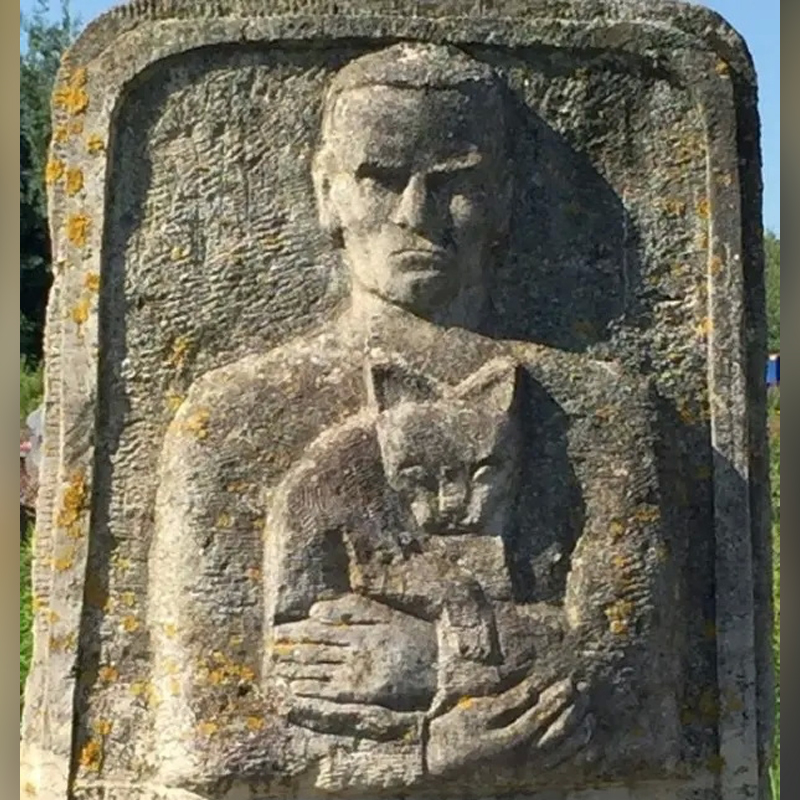Man Credited Siamese Cat with Helping Him Decipher Maya Script
By admin / August 16, 2022 / No Comments / Pet Cats
Viral social media posts suggest that genius Yuri Knorozov, a linguistics expert who deciphered the Maya script, credited his Siamese cat Aspid (Asya for short) as a co-author of his work. That’s right, Asya, the cat, helped him “unravel the mystery of the millennium.”
“How far would you go to make sure your cat got the spotlight they deserved? Yuri Knorozov, the linguist who deciphered the Maor a script, listed his cat Asya as a co-author on his work but the editors always removed her. His solution? Using this photo with Asya for his author image,” shared Cat Person on Instagram.
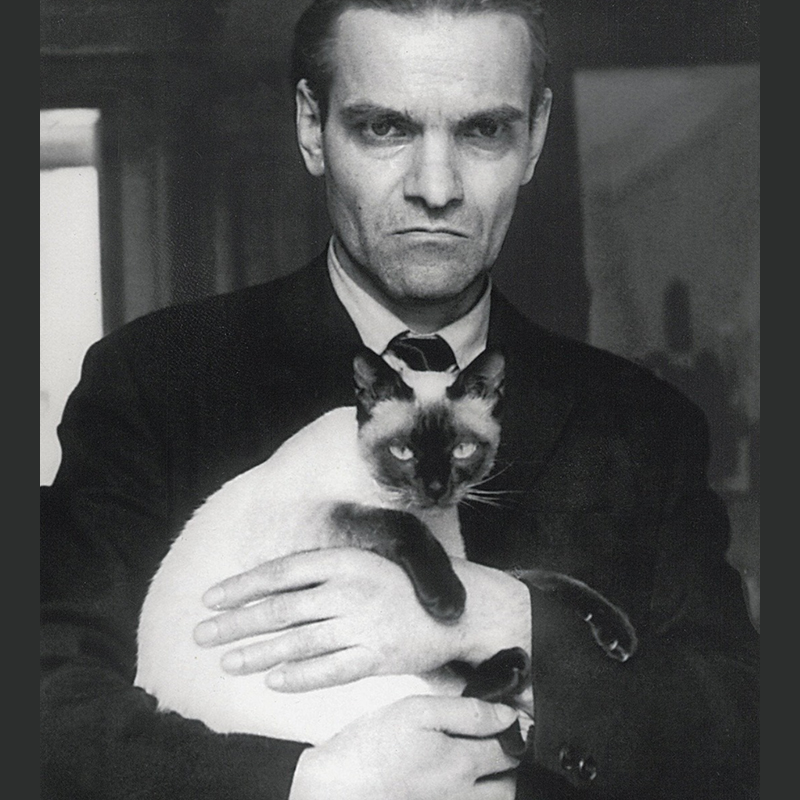
Image via Wikipedia, Galina Dzeniskevich
Upon looking into the story, it turns out to be true. The publishing house for the scientist’s work reportedly blacked out Aspid’s name when Knorozov listed her as co-author. It so angered him that he always offered a picture with Asya as his official photo, even though they cropped her out of the picture anyway!
Yuri Knorozov and Asya the Cat
By personal accounts, Knorozov was a quiet, introverted scientist who loved books and cats. Asya was a real companion for him, but she ran away. Later, he had two other cats at a time when keeping cats as pets were not common.
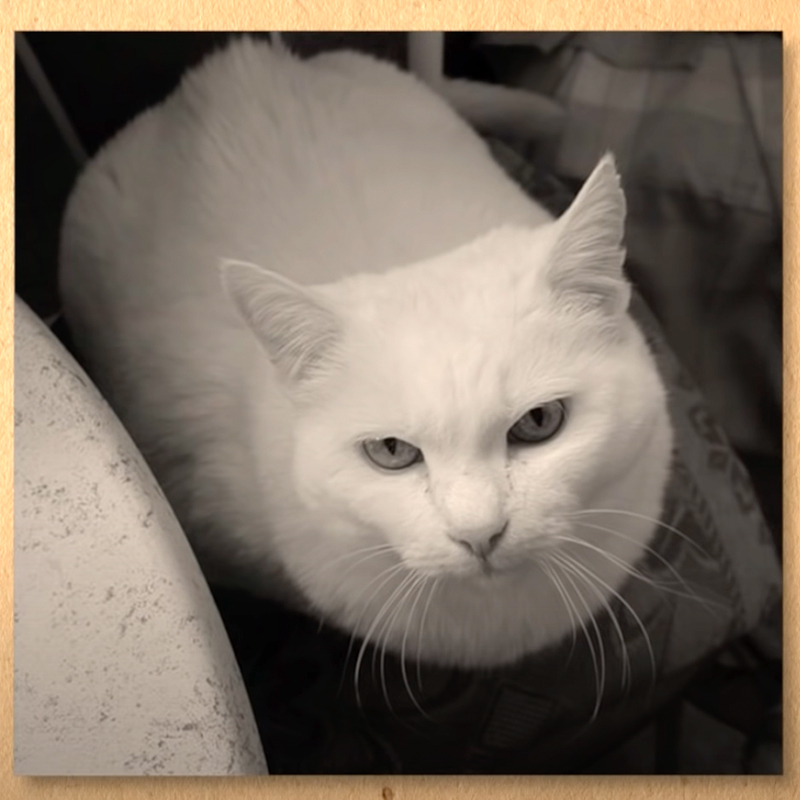
Another cat that lived with Knorozov. Image screenshot via YouTube
According to a Russian news source, he knew all of his acquaintances’ cats by name and would inquire about their health.
He was well-known for his piercing blue eyes and gaze. Those who knew him said he had a sharp sense of wit and sarcastic humor. But in pictures, he usually looks steely-eyed and, dare we say, cat-like in appearance.
Later in life, we see him with a black cat and a dog with a smile on his face.
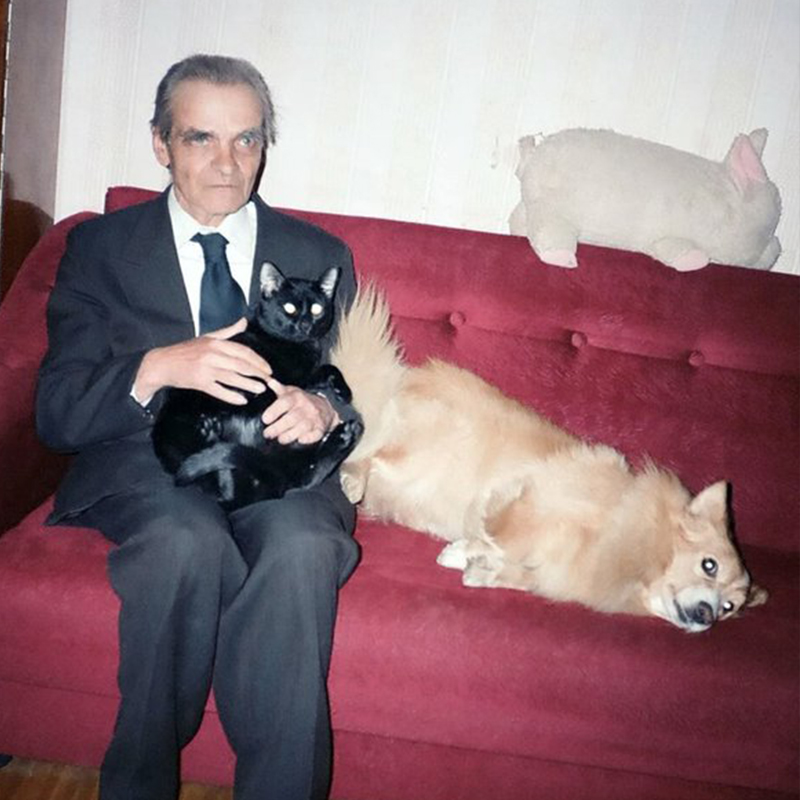
Images via Twitter
How Did Asya Help Knorozov?
According to a Russian source, Asya was teaching her kitten “Fat Kys” to hunt when Knorozov gained a moment of insight. The mama cat sent signals to communicate, “talking” to her kitten.
According to Top Cat:
“The kitten’s nickname was Tolsty Kys to the kitten born from her and kept his photo on his desktop – the cat deserved it because he once deftly caught a dove on the windowsill.”
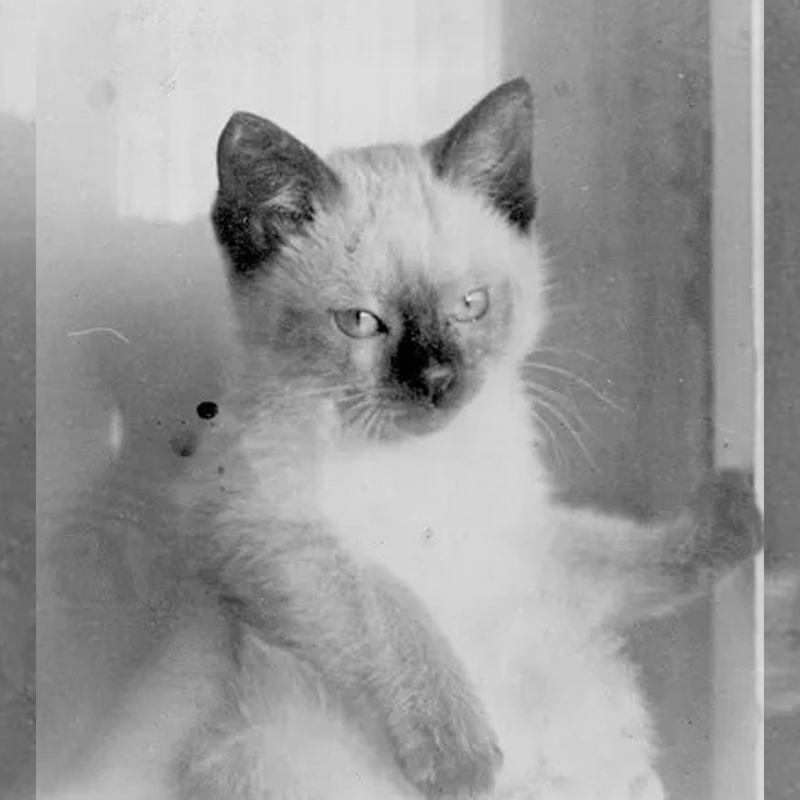
Fat Kys or Tolsty Kys via Top Cat
When the linguist credited Asya with helping him make the breakthrough of a lifetime, he wasn’t joking.
“He, not jokingly, called her his co-author since it was precisely the observation of Asya teaching her kitten to catch mice that led him to the idea, which later formed the basis of his brilliant article ‘On Questions about Signaling Classification,’ Russia 7News shared.

Image via Twitter
Asya the Cat Gets Equal Billing
After studying the Mayan glyphs or hieroglyphs, Knorozov determined they were phonetic syllabary, not alphabetic like our written language. For example, separate glyphs for tzu and lu were pronounced tzul, the Mayan word for “dog.”
He had obtained rare books “Report on Affairs in the Yucatan” and “Mayan Codes” to work from. Some say he somehow got them after the Berlin Library burned in 1945, but how he came across them is unclear. His major work was published in 1963, and Asya didn’t get her credit. Furthermore, the mainstream did not widely accept his work until the 70s.
As one person commented on Twitter in another viral post:
“I love that Yuri Knorozov is as well known in popular culture today for his fight for the recognition of his cat as he is for his groundbreaking work deciphering the Maya script. I think he would be delighted that Asya gets equal billing to him these days.”
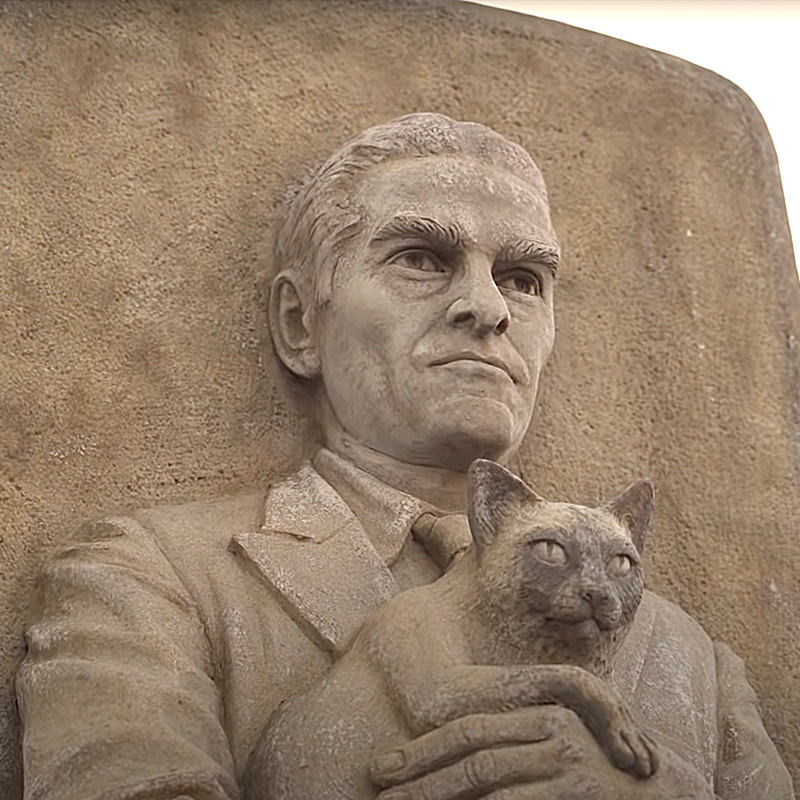
Screenshot via YouTube
Decoding Mayan Glyphs a World Away
Thanks to Knorozov’s work, others could build on it to decode the secrets of an ancient Mesoamerican civilization that dominated much of Central America and southern Mexico for 1,000 years. Yet Knorozov lived some 10,000 miles away on the other side of the globe.
Even so, he wasn’t allowed to travel to the jungles of Central America, where the Mayan pyramids are located, until he was 70. Finally, he traveled to Mexico and Guatemala after the collapse of the Soviet Union.
“I’m an armchair scientist. Why should I climb pyramids?” he often said.
But he discovered what others had failed to for centuries. In Mexico, particularly in the Yucatán area, the Ukrainian-born Knorozov became famous but remained little-known in Russia. In Mérida, Mexico, there is a monument to the serious-looking Knorozov holding Asya.
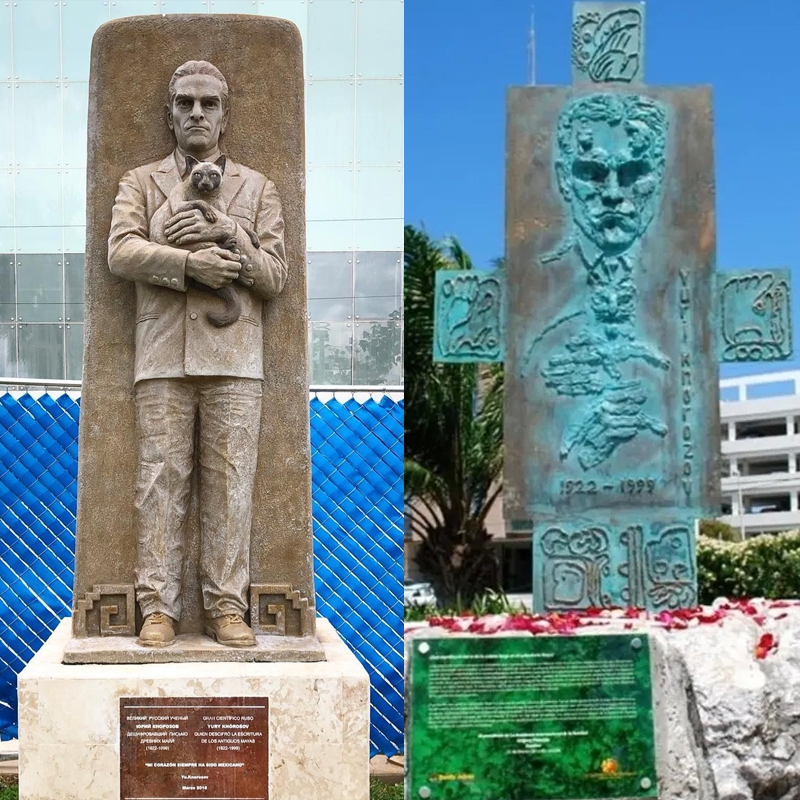
Images via Top Cat
Statues of Knorozov Holding Asya
During his travels in the 90s, Knorozov was awarded the Presidential Grand Gold Medal (Guatemala) and the Order of the Aztec Eagle (Mexico). President Vinicio Cerezo awared him the medal in person in Gautemala.
Upon receiving the awards, he is quoted as saying, “In my heart, I will always be Mexican.” These words are engraved on the statue in Mérida. On the front, he holds his cat, while on the back are Mayan glyphs.
In the mid-90s, Knorozov also achieved a dream by traveling to Santa Fe, New Mexico. He wished to see what he believed to be the site of the “Seven Caves” in Mesa Verde and was overjoyed to see it in person (see video below).
There is also an engraving of Knorozov with Asya in the Kovalevsky Cemetery in St. Petersburg.
He passed away in 1999 at age 76. The year 2022 marks the 100th anniversary of his birth.
The Mayan Culture and Cats
It seems fitting that a man who revered cats should have been instrumental in revealing more about the Mayan culture, which revered cats like jaguars. A common belief was that human souls could be connected to animals like cats. It was said some people could transform into cats to take part in mischief and pranks.
Video (with closed captioning) by Editorial:
The post Man Credited Siamese Cat with Helping Him Decipher Maya Script appeared first on Cole & Marmalade.

